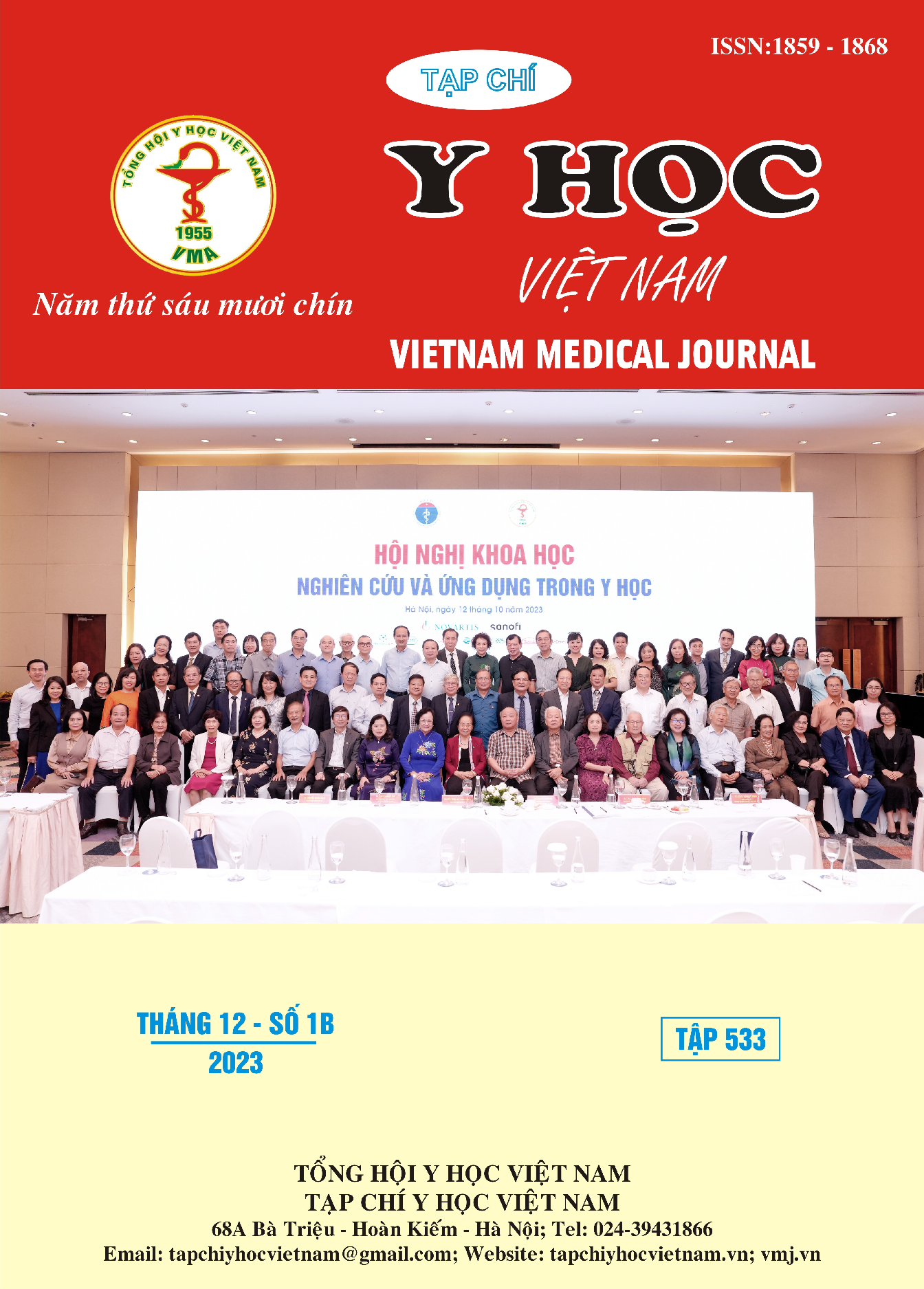EVALUATION OF BACTERIAL RESULTS AND RELATIONSHIP WITH CLINICAL AND PARACLINICAL CHARACTERISTICS IN EXHAUSTS OF CHRONIC OBSTRUCTION PULMONARY DISEASE
Main Article Content
Abstract
Objective: Bacteriological characteristics determined by sputum culture, real-time PCR techniques to quantify atypical bacteria and their relationship to clinical and paraclinical in exacerbation of COPD. Subject and method: This is a cross-sectional study, evaluate bacterial results in sputum conducted on 180 patients who was diagnosed with acute exacerbation of COPD and had inpatient treatment at National Lung Hospital, Vietnam from September 2016 to May 2021. Results: 67 cases of bacteria were positive (37.2%), negative (62.8%). Prevalence of bacterial species among positive patients: P. aeruginosa (20,9%), H. influenzae (17,9%), S. pneumoniae (11,9%), A. baumannii (10,4%), M. catarrhalis (9,0%), K. pneumoniae (6,0%), Stenotrophomanas maltophilia (3,0%), S. areus (3,0%). Atypical bacteria group: L. pneumophila (11.9%), M, pneumoniae (4.5%), Chlamydia pneumoniae (1.5%). Multivariable logistic regression analysis showed the number of exacerbations per year (>3 exacerbations), pulmonary rales, WB > 10G/L, CRP ≥ 40 mg/l, abnormal HCO3_, dirty lung images and bronchial wall thickening on chest Xray are symptoms that predict bacterial infection in COPD exacerbations (p<0.05). Conclusion: The results of bacteria identified in sputum using culture methods and realtime PCR techniques to detect DNA of some atypical bacteria are meaningful for clinical practice in choosing the use of antibiotics. reasonable in the treatment of COPD exacerbations.
Article Details
References
2. Feng. C, et al., Atypical Pathogen Distribution in Chinese Hospitalized AECOPD Patients: A Multicenter Cross-Sectional Study. Int J Chron Obstruct Pulmon Dis, 2021. 16: p. 1699-1708.
3. GOLD, Global strategy for the diagnosis, management, and prevention of chronic obstructive pulmonary disease.; www.goldcopd.org. 2015.
4. Anthonisen. N.R, et al., Antibiotic Therapy in Exacerbations of Chronic Obstructive Pulmonary Disease. Annals of Internal Medicine, 1987. 106(2): p. 196-204.
5. Alexandra Nakou MD, et al., The prevalence of common and atypical pathogens infectious exacerbations of chronic obstructive pulmonary disease (COPD) and their clinical importance. Chest, 2009. 136: p. 93.
6. Hurst JR and et al, ECLIPSE study. N Engl J Med, 2010. 363: p. 1128-1138.
7. Bircan. A, et al., C-reactive protein levels in patients with chronic obstructive pulmonary disease: role of infection. Med Princ Pract, 2008. 17(3): p. 202-8.
8. Alexandra Nakou, et al., A prospective study on bacterial and atypical etiology of acute exacerbation in chronic obstructive pulmonary disease. Future Microbiology, 2014. 9(11).


